Today, our view on the universe gets itself an update thanks to the combined efforts of theorists and observers. From a new understanding of how galaxies can lose their dark matter, to how white dwarfs can be resurrected into helium-burning stars, we have the weird, the wonderful, and in the case of a new lunar tracking system, we even have a touch of the mundane. Plus, this week in rocket history, we look back at STS-82 which serviced the Hubble Space Telescope.
Podcast
Show Notes
Galaxies without dark matter were robbed
- University of California, Irvine press release
- “Galaxies lacking dark matter produced by close encounters in a cosmological simulation,” Jorge Moreno et al., 14 February 2022, Nature Astronomy
25 million stars probe galactic chemistry
- University of Notre Dame press release
- “Beyond Spectroscopy. I. Metallicities, Distances, and Age Estimates for Over 20 Million Stars from SMSS DR2 and Gaia EDR3,” Yang Huang et al., 2022 February 3, The Astrophysical Journal
One weird star where once were two white dwarfs
- Royal Astronomical Society press release
- “An evolutionary channel for CO-rich and pulsating He-rich subdwarfs,” M M Miller Bertolami et al., 2022 January 7, Monthly Notices of the Royal Astronomical Society
- “Discovery of hot subdwarfs covered with helium-burning ash,” Klaus Werner, Nicole Reindl, Stephan Geier, and Max Pritzkuleit, 2022 February 12, Monthly Notices of the Royal Astronomical Society
Lunar traffic control in the plans
- The University of Arizona press release
China’s moon sample updates lunar dating profile
- China’s moon sample updates lunar chronology model (EurekAlert)
- “Updated lunar cratering chronology model with the radiometric age of Chang’e-5 samples,” Zongyu Yue et al., 2022 February 14, Nature Astronomy
NASA’s IXPE returns SCIENCE!
- NASA press release
This Week in Rocket History: STS-82
- STS-82 (NASA)
- NICMOS (Space Telescope Science Institute)
- NASA attempts to revive Hubble’s main camera (New Scientist)
Transcript
Today, our view on the universe gets itself an update thanks to the combined efforts of theorists and observers. From a new understanding of how galaxies can lose their dark matter, to how white dwarfs can be resurrected into helium-burning stars, we have the weird, the wonderful, and in the case of a new lunar tracking system, we even have a touch of the mundane.
All of this now, right here on the Daily Space.
I am your host Dr. Pamela Gay.
And we’re here to put science in your brain
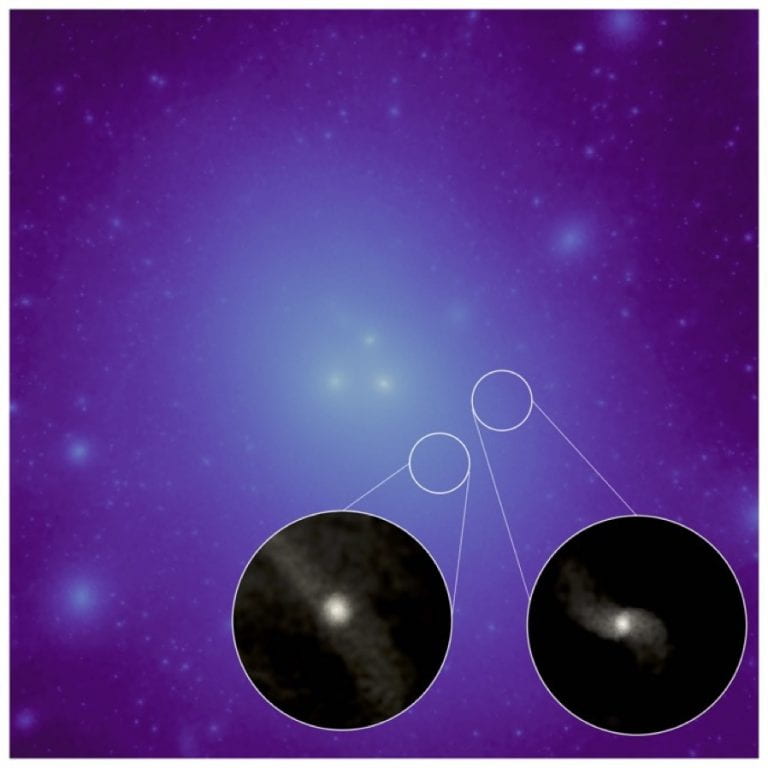
Back in 2018, the astronomical community was thrilled with the discovery that there are galaxies out there without dark matter. Our universe, in the broadest of terms, is made of three components: regular – baryonic – matter like what we’re made of; a kind of matter that doesn’t interact with light or much else called dark matter; and something we can’t really describe yet that we named dark energy.
Dark Matter is stuff that gravitationally can pull on its surroundings and be pulled on. It was discovered through the acceleration of orbits in the outskirts of our galaxy and confirmed through how its gravity can be seen pulling things around and even bending light. This ability to interact with gravity appears to be core to explaining how some galaxies end up with a lot of dark matter and some with, eventually, basically none.
In new research published in Nature Astronomy, researchers led by Jorge Moreno describe a series of computer simulations of a 60-million-light-year-across chunk of the universe that evolved the region across the age of the universe. Over time, simulated galaxies grew, evolved, collided, and in these collisions, stole material from one another.
Specifically, when small galaxies interacted with larger systems, those larger systems could strip away dark matter. At the conclusion of the simulation, seven galaxies in the simulated region had only trace amounts of dark matter and resembled those previously observed in the real universe This was a relief to researchers involved because the simulation was designed just to follow physics using the known composition of the universe, and it didn’t presuppose collisions or any other kinds of behaviors.
Follow the physics, folks. When you do things right, even the rarest treats of our universe eventually should get explained.
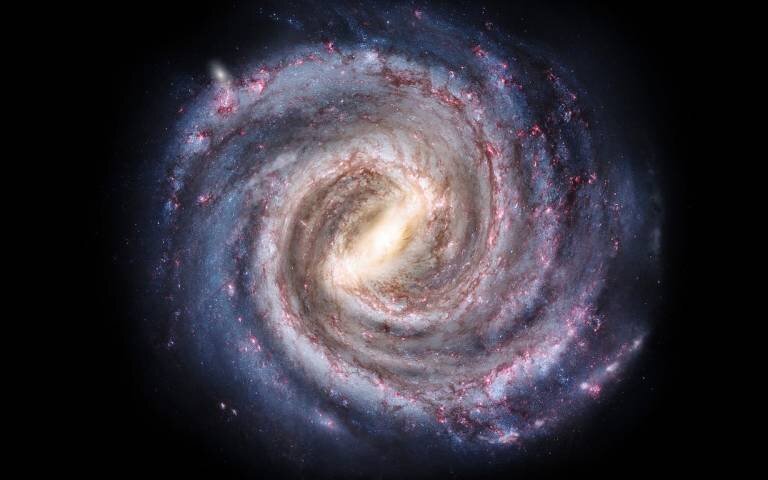
Understanding our universe requires the one-two punch of combining observations and models and refining our understanding until those theory-driven models resemble the observations. And when the models reveal things beyond our observations’ abilities, sometimes we have to do more observing.
And for one team of researchers, “more observing” has led to the publication of a 24-million-star catalog that documents the chemical evolution of our galaxy.
As the story goes, our universe formed with a mixture of hydrogen, helium, and trace amounts of lithium and beryllium. Larger atoms have been created inside subsequent generations of stars and in bursts of fusion at the moments of their death by supernova or merger with another star. Since different kinds of stars create different kinds and proportions of atoms, we should be able to trace the history of our galaxy by looking at the distribution of different atoms in stars that formed at different times.
And now, 25 million stellar spectra later, researchers can begin to key in on details. According to lead researcher Tim Beers: The elemental abundances of individual stars trace the chemical enrichment of the Milky Way galaxy, from when it first began to form stars shortly after the Big Bang to the present. Combining this information with the stellar distances and motions allows us to constrain the origin of different components in the galaxy, such as the halo and disk populations. Adding age estimates puts a `clock’ on the process so that a much more complete picture of the entire process can be drawn.
Analysis of this catalog will lead to a richer understanding of the origins of different parts of our galaxy, and when those results are published, we’ll bring them to you here on the Daily Space.
With 25 million stars to study, we know there will be weird things to learn. Sometimes, just looking at one kind of object can create a massive mystery!
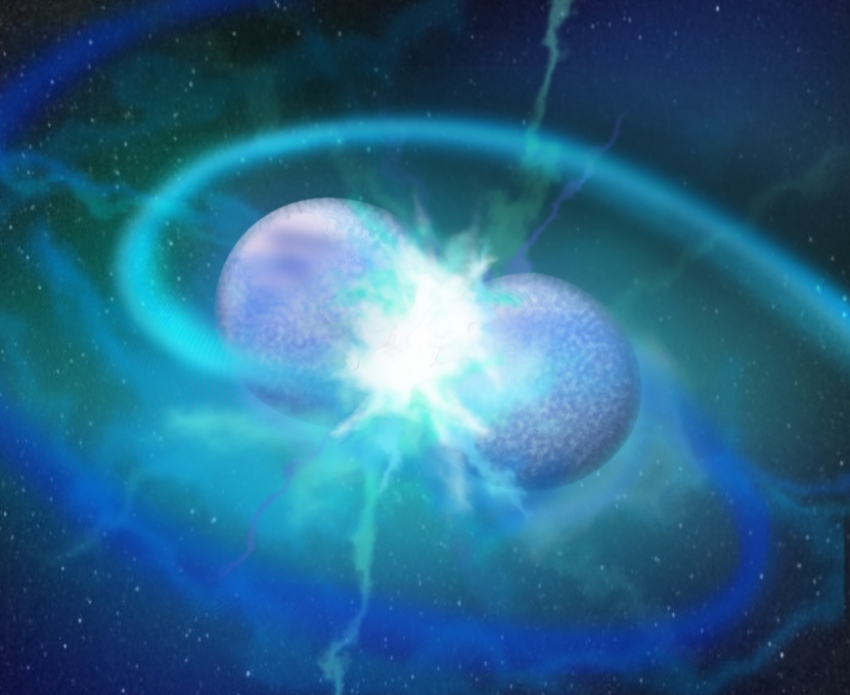
Researchers studying a new class of hot subluminous stars discovered that two of the weird stars they were looking at had atmospheres rich in carbon and oxygen, a situation that is weird. While carbon and oxygen are common enough elements, they are scarce in comparison to hydrogen and helium, and when we look at stars, we see atmospheres dominated by hydrogen and helium with only rare exceptions, and those exceptions are normal former stars. White dwarfs, the leftover cores of stars that are no longer undergoing nuclear burning, sometimes have carbon/oxygen atmospheres because their surfaces are what used to be the inner regions of a star where the elements were formed.
But hot subluminous stars are very much alive and do have nuclear burning going on. So how do you get a living star to look like a dead one? Apparently, through stellar resurrection.
This discovery was led by Klaus Werner and is published in a pair of papers in the Monthly Notices of the Royal Astronomica Society that are led by Werner and Miller Bertolami. The research team thinks that it’s possible that a carbon/oxygen white dwarf merged with a helium-rich white dwarf, and through their combined masses, these two dead stars combined into one living star capable of burning helium in its core. Maybe. As Bertolami puts it: Usually, white dwarf mergers do not lead to the formation of stars enriched in carbon and oxygen, but we believe that for binary systems formed with very specific masses, a carbon- and oxygen-rich white dwarf might be disrupted and end up on top of a helium-rich one, leading to the formation of these stars.
More modeling and more observations are needed to look at both what is possible and what is out there. No matter what is found, we can say the universe is more interesting than we knew yesterday.
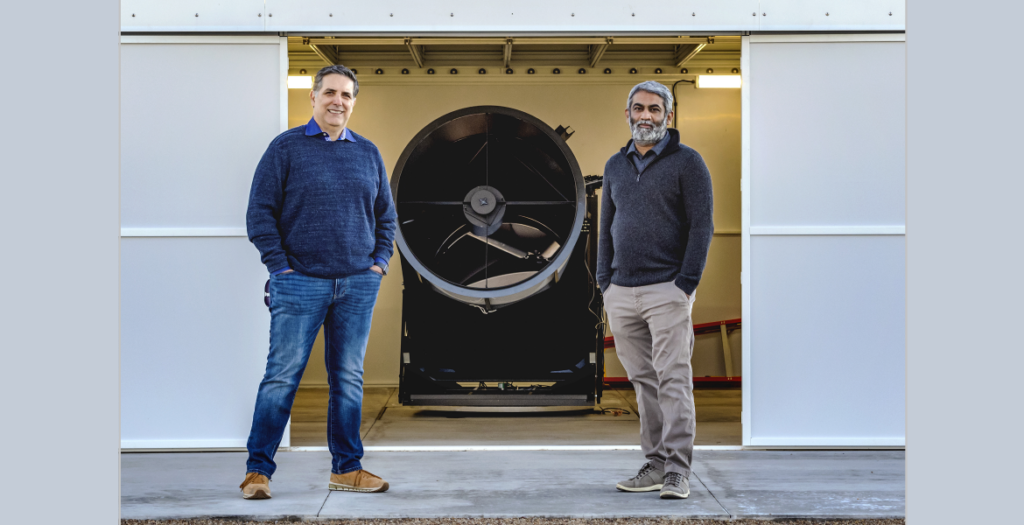
One of the recurring topics around here is the clutter around Earth. Our sky is visibly active with satellites in orbits of many angles and altitudes, and keeping track of all the active and defunct missions and the random space debris in orbit is the work of myriad people across a variety of organizations, including folks with sensitive radar dishes like NORAD.
The Moon is a much-anticipated target for near-future exploration, and in preparation for sticking people back on its surface, hopefully this decade, many nations are putting spacecraft in lunar orbit. Where they are creating a new region of clutter and where no one is watching.
Or rather, where no one has been watching. The USAF has awarded the University of Arizona $7.5 million dollars to develop ways to “detect, characterize and track objects in cislunar space or the space between Earth and the Moon.”
According to a press release on this award, which is led by principal investigators Roberto Furfaro and Vishnu Reddy, this team and their students in the Lunar and Planetary Laboratory “use dedicated sensors at the university’s Biosphere 2 research facility to characterize objects in space. Their suite of equipment includes several telescopes dedicated to space domain awareness, including one built by a group of University of Arizona engineering undergraduates.”
As Reddy explains it: It’s like tracking a firefly that’s flying around a searchlight.
Only in this citation, if you hit the firefly, spacecraft die. This is super cool and super important work, and we can’t wait to hear more as this project evolves.

As someone born after the last Apollo mission, it is exciting to see the world working to return to the Moon. And I mean the world.
From India to Israel to China and Russia, nation after nation is getting hardware to the Moon — sometimes with a bit more speed than intended. Among the new stars of lunar exploration is the Chinese series of Chang’e missions, which include the Chang’e 5-Ti mission, which is about to crash a rocket booster into the Moon and which returned a sample of rocks from the Oceanus Procellarum region in 2020.
Using radiometric dating, researchers got an age of 2.03 billion years for this region, which is consistent with expectations. Where things get neat is in looking at the craters. Since rocks fall out of the lunar skies at a consistent rate across the Moon, we know that areas with fewer craters are younger for one reason or another, with things like lava filling craters and large craters periodically resetting regions by eradicating smaller craters.
If two regions have the same cratering, they should be the same age, and new crater counts of the region around the Chang’e 5 collection site show that other regions of the Moon, with the same crater counts, are about 200 million years older than previously theorized. This shows the importance of getting actual measurements. While the entirety of the Moon is always cratered at similar rates, those rates aren’t constant with time, and it is from lunar samples that we can get a true understanding of our nearest neighbor.

Before going to this week in Rocket history, we have a bit of good news from a NASA space telescope that has returned its first bit of science.
No, not that one.
I’m talking about the NASA Imaging X-ray Polarimetry Explorer, or IXPE, which has returned its first science image: a pretty picture of the X-ray emission from the Cassiopeia A supernova remnant. The released data shows a violet donut, and NASA has combined it with a web of Chandra data to create a stunning image that looks more like medical imaging than astrophysics. We have a high-resolution version of this image available at DailySpace.org.
Next up, Erik Madaus brings us a past mission to update our beloved Hubble Space Telescope.
This Week in Rocket History
This Week in Rocket History is STS-82, the second servicing mission to the Hubble Space Telescope.
STS-82 was a demonstration of what the shuttle was always intended to do: bring humans to orbit to service a spacecraft designed for repair, instead of the many missions with just satellite deployments it had been doing which did not strictly require their presence. Hubble had been serviced once before to fix the major flaw in its mirror that prevented it from doing any science.
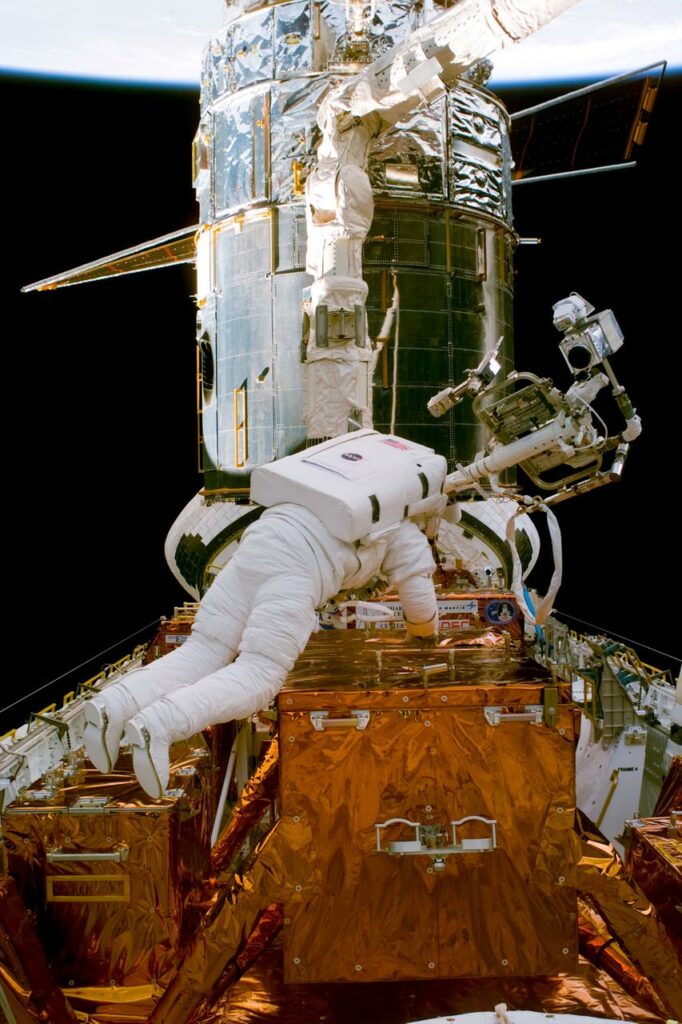
The repairs and upgrades on STS-82 were much less drastic, consisting mostly of swapping out functioning instruments for better ones using new technology developed after its launch and replacing broken components. The seven-member crew of Ken Bowersox, Scott Horowitz, Mark Lee, Steven Hawley, Steven Smith, Greg Harbaugh, and Joseph Tanner conducted five EVAs over the course of the almost ten-day mission. Tanner, Smith, Harbaugh, and Lee did all of the EVAs.
STS-82 launched on Shuttle Discovery from LC-39A at the Kennedy Space Complex in Florida on February 11, 1997. Discovery was the same orbiter that delivered Hubble to orbit in 1990. Discovery took two days to rendezvous and grapple the telescope using the Shuttle Remote Manipulator System, better known as the Canadarm, controlled by Steven Hawley. Hawley happened to be the one who released it into orbit the first time back in 1990.
The astronauts performed one EVA each day of the mission. The first EVA took place on February 13 and lasted about six hours. The goal of the first EVA was to replace two instruments — the Goddard High-Resolution Spectrograph and the Faint Object Spectrograph. These were replaced with the Space Telescope Imaging Spectrograph( STIS) and the Near Infrared Camera and Multi-Object Spectrometer (NICMOS).
The second EVA replaced some of the worn-out components, a fine guidance sensor, and a tape recorder. The astronauts also installed a new piece of equipment to improve the fine guidance sensor called the Optical Control Electronics Enhancement Kit.
The third EVA replaced more worn-out components, including another tape recorder with a digital storage device and a broken reaction wheel. Reaction wheels are used to point the telescope without using thrusters. Each solid-state recorder had ten times the storage capacity of the tape recorder it replaced, 12 gigabits or 1.5 gigabytes versus 1.2 gigabits or one hundred fifty thousand kilobytes. For comparison, 1.5 gigabytes is about the size of a standard definition movie. Another advantage of the solid-state recorder was the lack of moving parts to wear out.
One of the advantages of working in low-Earth orbit is close contact with ground control. After the third EVA, engineers on the ground decided to add a fifth EVA to the mission to repair part of the spacecraft noted as damaged on the second EVA.
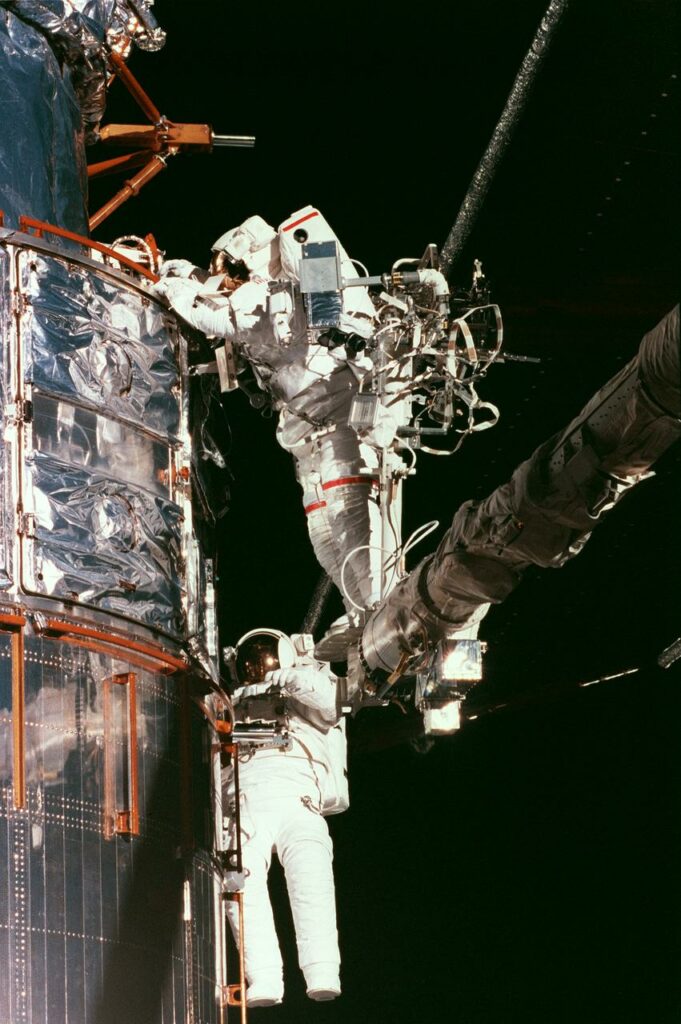
The main goal of EVA four was to replace the electronics box which controlled the pointing of the solar panels and some of the damaged insulation. While the EVA was taking place, two of the non-spacewalking crewmembers made replacement insulation blankets to be installed on the fifth EVA.
The fifth and final EVA involved installing the new thermal insulation blankets to protect several critical components of the telescope from damage and thermal problems.
The five EVAs on STS-82 involved a total of 33 hours and 11 minutes, which was two hours less than the first servicing mission.
Before Discovery returned to Earth, it boosted Hubble, which has no thrusters of its own, up to a higher orbit using the shuttle’s small thrusters, rather than the larger orbital maneuvering engines so as not to disturb the sensitive telescope.
Wheel stop on STS-82 was 9 days, 23 hours, 37 minutes, and 9 seconds after take-off on the Shuttle Landing Facility runway at Kennedy Space Center in Florida. Discovery completed 150 orbits over that time.
NICMOS operated from its installation in 1997 until 1999 when it ran out of cryo coolant. It was replenished in 2002 during the STS-109 mission and operated until 2008 before failing again. It is still installed in the telescope.
STIS had an electronics failure in 2004, but it was repaired in 2009 during the STS-125 mission and is still operating as of 2022.
Statistics
And now, for some statistics.
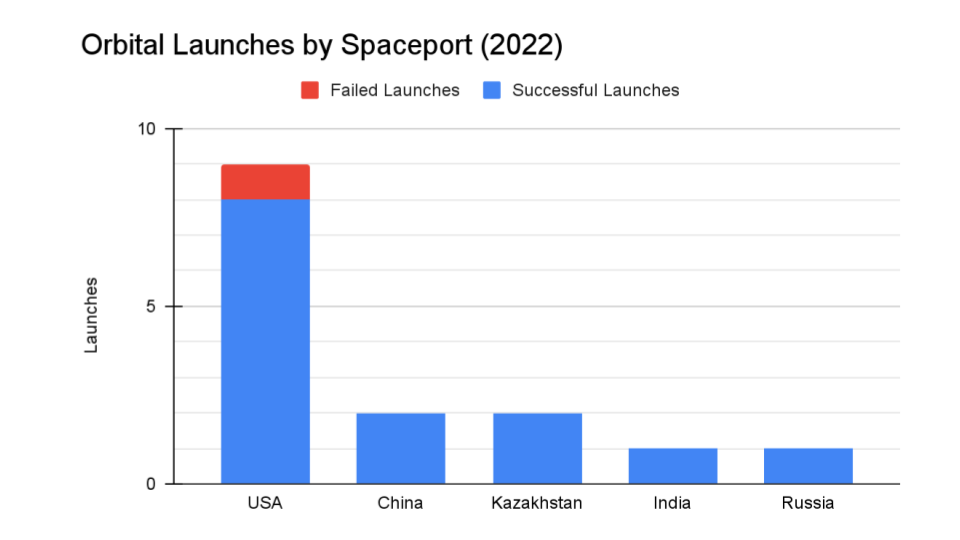
The number of toilets in space is still eight: four on the ISS, one on the Soyuz, one on the Crew Dragon, one on Shenzhou 13, and one on Tianhe.
We keep track of orbital launches by launch site, also called spaceport. Here’s that breakdown:
USA 9
China 2
Kazakhstan 2
India 1
Russia 1
From those fifteen launches, a total of 303 spacecraft were put into orbit.
This has been the Daily Space.
You can find more information on all our stories, including images, at DailySpace.org. As always, we’re here thanks to the donations of people like you. If you like our content, please consider joining our Patreon at Patreon.com/CosmoQuestX.
Credits
Written by Pamela Gay and Erik Madaus
Hosted by Pamela Gay and Erik Madaus
Audio and Video Editing by Ally Pelphrey
Content Editing by Beth Johnson
Intro and Outro music by Kevin MacLeod, https://incompetech.com/music/


 We record most shows live, on Twitch. Follow us today to get alerts when we go live.
We record most shows live, on Twitch. Follow us today to get alerts when we go live.